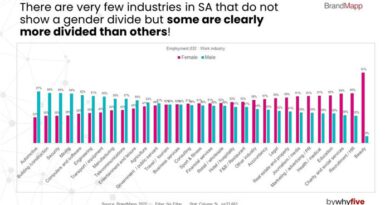Why township retail must not be overlooked
Despite the challenging economy, South African townships have become hubs for big brand developments in retail. According to Lemok Group founder and chief executive officer Lebogang Mokubela, the township retail market is a force of its own and should not be overlooked or underestimated.
Maponya Mall |
Speaking at the eighth Annual South African Council of Shopping Centres’ (SACSC) Research Conference, Mokubela noted that the township market has buying power of R11 billion.
“The number of shoppers who turn out at Maponya Mall at any given weekend bears testimony to this. As an example, sitting at 65,000m2, the R650-million Maponya Mall in Soweto is one of the largest retail hubs in South Africa. What drives profitability within the township market is a balance between a sought-after tenant mix as well as entertainment. Previously, you wouldn’t find high-end stores such as Woolworths Food in the township, however, we are seeing a bigger demand for such stores. This is also driven by the fact that the township market is very diverse – you can have someone who earns R1,000 a month all the way to guy who spends R1,000 on a bottle of champagne,” he said.
Mokubela established Lemok Group at age 25, and it has since grown from a small township-based consulting company to an award-winning digital marketing company. “I worked as a director at an ad agency on many campaigns. I became concerned by the agency’s approach to township advertising and marketing. The agency would go into the market with a ‘buy item X and stand a chance of winning a t-shirt’ approach and think it was the way to appeal to the communities. I felt this truly undermined the market. I decided to resign and establish Lemok as an agency that would devote itself to helping brands understand the township market properly and respectfully,” he said.
Township retail growth
The Retail Centres and Township Development case study commissioned by Urban LandMark and conducted by Demacon Market Studies in partnership with the Training for Township Renewal Initiative (TTRI) and the National Treasury highlighted the growth of the township market in the last decade.
According to the case study, in rural and township areas – which are classified as ‘second economy’ areas in South Africa – retail centres have been increasing in both number and size. Nationally, 160 retail centres had been developed in second economy areas by 2009. Of the 116 developed since 1962, 66 were developed in the 37 years between 1962 and 1999, and 50 in the 10 years between 2000 and 2009. The average size of the shopping centre, measured in terms of retail floor space, increased from 6,500m2 gross leasable area (GLA) before 1994, to almost 20,000m2 GLA post-1994.
New data indicates that the average size of centres developed has steadily increased in size since the 1990’s with centres slated for completion between 2017 and 2020 being significantly larger than those developed during the 1990’s and 2000’s. This trend towards larger centres may be explained by developers opting for larger formats in order to dominate its immediate catchment area and attract a higher proportion of national tenants, thus strengthening the centre’s position within its catchment area.
The data also indicates that proposed centres planned in the country’s city regions, local/niche towns and service towns are all now 100% larger compared to those developed during the 2000’s. As of July 2017, the South African retail development pipeline measures 1.9 million square metres across 68 centres – the bulk of which is planned for completion this year.
Social cohesion
Lebogang said that social cohesion is important among township communities and big business houses and decision-makers need to be aware of this.
“Most people would be surprised how diverse the township market is. What drives resonance in the market is simply social cohesion – people want to see and be seen. Shopping centres that can create spaces and initiatives where the market can, and want to be seen at, will win. I would suggest that developers and shopping centre marketing managers need to consider the demographic profile of the specific township before developing a mall or shopping centre. They also need to pay careful consideration to tenant mix to ensure shops will be used frequently by township shoppers – let’s not assume a Boxer or Royal Butchery is what is needed.
“There is an ever-growing discerning consumer within the township market who’d rather drive to Mall of Africa, living in Soshanguve, just to get the experience they’re looking for. Not everyone is poor in the township. Not everyone speaks slang in the township. These are just some of the misconceptions brands carry and often this is the source of many shortcomings,” he said.
Source: bizcommunity.com

